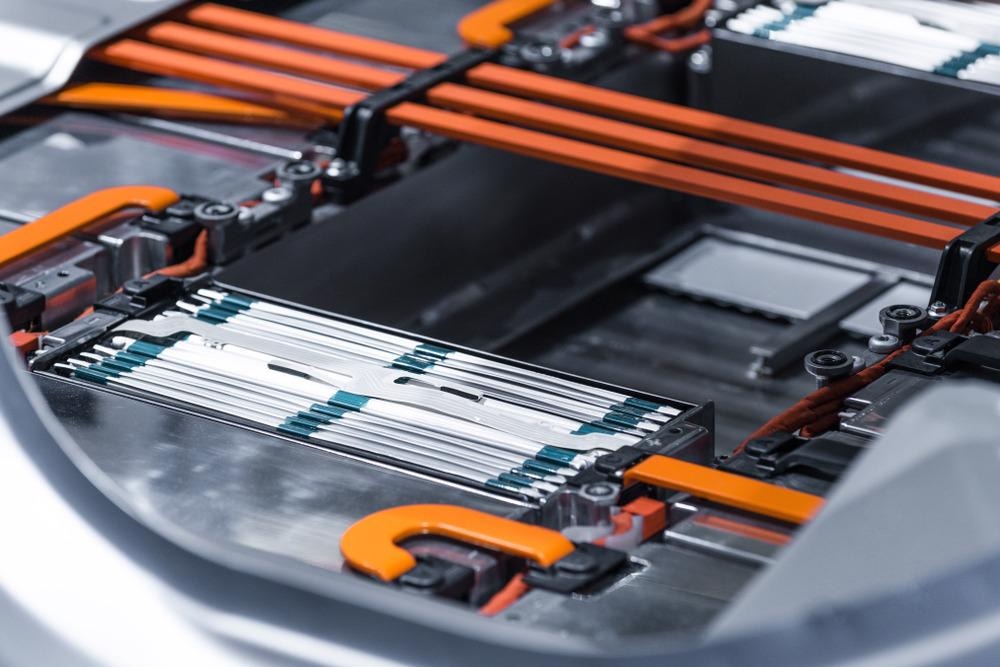
Image Credit: Sergii Chernov/Shutterstock.com
A team of researchers working in multiple engineering disciplines has developed a new battery that could revolutionize energy storage by replacing the harmful solvents we use in regular batteries today with seawater.
The aqueous battery developed by the team at Oregon State University’s College of Engineering – in collaboration with colleagues at the Universities of Central Florida and Houston – includes an anode composed of a zinc- and manganese-based alloy arranged in a novel nanostructure.
This innovation works with salt water-based battery electrolytes, including ordinary, untreated seawater. It can also be mass-produced using existing nano-manufacturing techniques and has the potential to remove the relatively unsafe, expensive, and environmentally detrimental lithium-ion battery from its current predominant place in the market.
Aqueous Batteries: An Emerging Safe Alternative
Commenting on this latest study and potential technological breakthrough, OSU chemical engineering researcher Zhenxing Feng said:
“The world's energy needs are increasing, but the development of next-generation electrochemical energy storage systems with high energy density and long cycling life remains technically challenging. Aqueous batteries, which use water-based conducting solutions as the electrolytes, are an emerging and much safer alternative to lithium-ion batteries.”
Electrolytes are the materials in a battery that transport electricity between two electrode terminals – the anode and cathode. In lithium-ion batteries, lithium ions are used as the electrolyte material, held in place by organic solvents. These solvents can be dangerous.
How are Lithium-Ion Batteries Unsafe?
“Electrolytes in lithium-ion batteries are commonly dissolved in organic solvents, which are flammable and often decompose at high operation voltages. Thus there are obviously safety concerns.”
In recent years, lithium-ion battery failures have been widely reported and damaging to global technology companies and have even caused injuries. A fire in a parked Boeing 787 jet in 2013, numerous exploding Samsung Galaxy Note 7 smartphones in 2016, and several spontaneous combustion occurrences in several Tesla Model S electric cars in 2019 have all been attributed to lithium-ion battery failure.
It is not only the flammable and unstable solvents used in lithium-ion electrolyte materials that make these batteries dangerous. “Lithium dendrite growth at the electrode-electrolyte interface can cause a short between the electrodes,” Feng said.
The new battery system could overcome these safety concerns and provide much better energy storage in the future. Feng continued: “The use of the alloy with its special nanostructure not only suppresses dendrite formation by controlling the surface reaction thermodynamics and the reaction kinetics, it also demonstrates super-high stability over thousands of cycles under harsh electrochemical conditions.”
Do Aqueous Batteries Work?
While the safety benefits of aqueous batteries are apparent – as well as the clear environmental and financial cases that can be made for utilizing such an abundant resource as seawater – their potential to revolutionize energy storage is yet to be fully realized.
Feng commented on some of the technological barriers: “The energy density of aqueous systems has been comparatively low, and also the water will react with the lithium, which has further hindered aqueous batteries' widespread use.”
But the new anode design – crafted from a nanostructured alloy of zinc and manganese – overcomes this barrier.
Feng continued, “The use of zinc can transfer twice as many charges than lithium, thus improving the energy density of the battery.”
Are Aqueous Batteries a Practical Option?
With the new nanostructured anode design, the research team has produced a battery that will withstand the rigors of multiple cycles of charge and discharge over a long battery lifetime.
“Our theoretical and experimental studies proved that the 3D alloy anode has unprecedented interfacial stability, achieved by a favorable diffusion channel of zinc on the alloy surface,” Feng said.
The new battery system can work just as well with seawater as the electrolyte – without degrading quickly.
“We also tested our aqueous battery using seawater, instead of high purity deionized water, as the electrolyte,” Feng added.
Will Aqueous Batteries Revolutionize Energy Storage?
The potential for using seawater as an electrolyte and incorporating existing nano-manufacturing techniques to build the anode means the experimental battery could be produced at scale today. Feng said: “Our work shows the commercial potential for large-scale manufacturing of these batteries.”
As seawater batteries become more commercially viable, we will see far fewer harmful solvents entering the environment through waste.
Batteries with minimized dendrite formation could result in longer lifespans for consumer electronics. Technology giants such as Samsung and Tesla could avoid future dangerous battery failures.
Feng was confident about the potential shown by this new research. He said, “The concept demonstrated in this collaborative work is likely to bring a paradigm shift in the design of high-performance alloy anodes for aqueous and non-aqueous batteries, revolutionizing the battery industry.”
References and Further Reading
Tian, H., Li, Z., Feng, G. et al. (2021) Stable, high-performance, dendrite-free, seawater-based aqueous batteries. Nature Communications. https://doi.org/10.1038/s41467-020-20334-6.
Lundeberg, S. (2021) New nanostructured alloy for anode is a big step toward revolutionizing energy storage. [Online] Oregon State University. Available at: https://today.oregonstate.edu/news/new-nanostructured-alloy-anode-big-step-toward-revolutionizing-energy-storage (Accessed on 27 January 2021).
Disclaimer: The views expressed here are those of the author expressed in their private capacity and do not necessarily represent the views of AZoM.com Limited T/A AZoNetwork the owner and operator of this website. This disclaimer forms part of the Terms and conditions of use of this website.